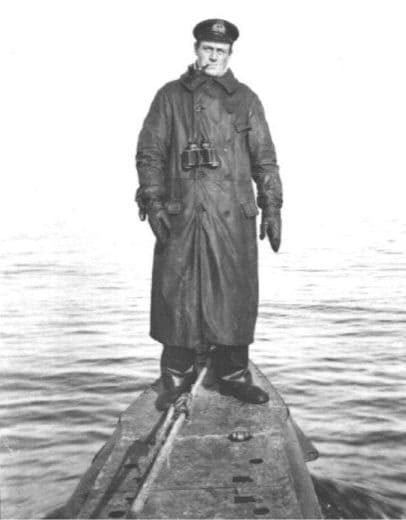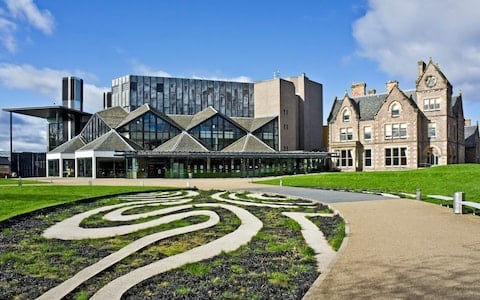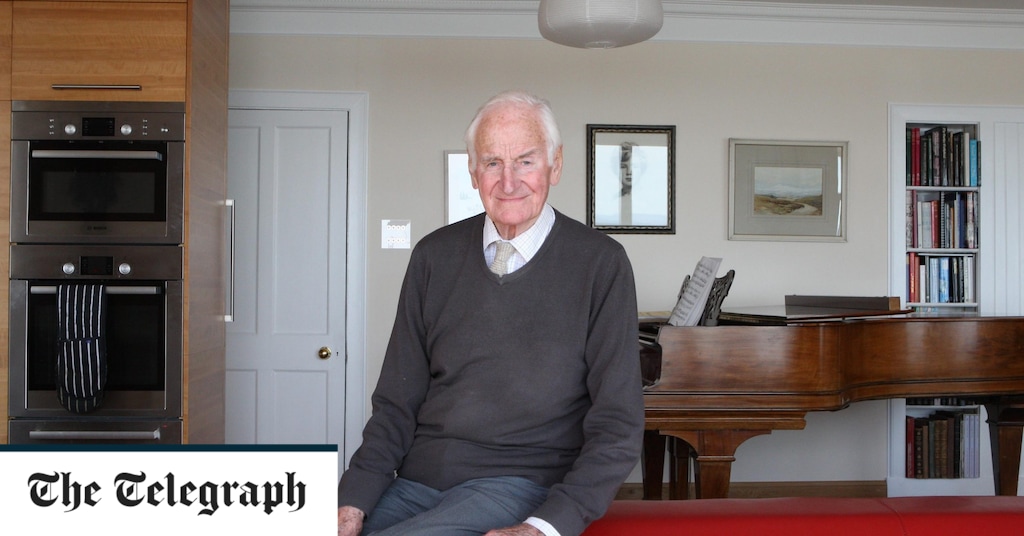Professor Sir James Dunbar-Nasmith, who has died aged 96, was an eminent architectural teacher and practitioner, who has left a significant mark on the landscape of Scotland. His best-known commission, however, was the benighted Sunninghill Park, on the edge of Windsor Great Park, for the Duke and Duchess of York.
A wedding present from the Queen, Sunninghill was completed in 1990. The first newly built royal residence since Bagshot Park (the nearby Victorian pile now occupied by the Duke of Edinburgh), Sunninghill was very different. A sprawling, two-storey, red brick “McMansion”, with six reception rooms, 12 bedrooms and 12 bathrooms, it was variously compared either with a “Tesco-style supermarket” or “Southfork”, the Texas ranch of the dysfunctional Ewing family in the television soap opera Dallas.
Dunbar-Nasmith was well known to the Royal family as the estate architect at Balmoral, and as a sensitive designer of country houses. Suppressing his own instincts, he did his best for a demanding client, but the Yorks’ marriage was soon to end, and in 2002 “SouthYork” (as it was soon nicknamed in the press) was finally vacated by the Duchess.
Sold to a wealthy Kazakh, by 2014 it was in a shocking state of dereliction. Demolition was only briefly deferred after the discovery of 100 roosting bats in the roof; an even more lavish construction is currently taking shape on the site.
Boarded up and derelict Sunninghill Park, former home of the Duke and Duchess of York
Credit: David Cooper/Alamy
Dunbar-Nasmith’s more enduring legacy is a trio of Scottish theatres. Eden Court in Inverness, opened in 1976, is a colossal arts complex, boasting two auditoria, two cinemas and a striking, highly innovative design.
The Pitlochry Festival Theatre, completed in 1981, is another spectacular building and a further significant contribution to the revival of the arts in the Highlands. A showcase venue for Scottish talent, it attracts thousands of tourists in the summer, when it offers a varied programme of theatre, music and dance.
Even more notable was Dunbar-Nasmith’s re-design of the former Empire Palace Theatre in Edinburgh, which had been reduced to a bingo hall. To research the site, he joined the bingo club, arriving with his tape measure. It re-opened in 1994 as the Edinburgh Festival Theatre, its towering glass facade a fitting symbol of its rejuvenation.
A landmark building, it serves today as headquarters for the Scottish Opera, the Scottish Ballet and the Edinburgh International Festival, of which Dunbar-Nasmith was sometime chairman.


Lieutenant-Commander Martin Nasmith on his submarine E11 in 1915
James Duncan Dunbar-Nasmith was born on March 15 1927 near the Royal Naval College, Dartmouth, where his father, Admiral Sir Martin Dunbar-Nasmith, was Commandant. A pioneer of the submarine service, Sir Martin had been awarded the VC in 1915 for playing havoc with Turkish shipping in the Dardanelles.
Sir Martin married Beatrix Justina, daughter of Commander Harry Dunbar-Dunbar-Rivers, of Glen of Rothes, Morayshire, and took up residence in her family home, a Scots baronial mansion equipped with 22 bedrooms and a single bathroom. Of Scottish descent, though born in England, Sir Martin contented himself in 1923 with the addition of a single “Dunbar” to his surname. The family has long since abandoned the house for a more comfortable residence nearby.


Pitlochry Festival Theatre
Credit: Doug Houghton/Alamy
While his elder brother David joined the Navy (and rose to Rear-Admiral), James progressed from Lockers Park[no apos to Winchester College. He was commissioned into the Scots Guards and served for three years, before studying Architecture at Trinity College, Cambridge, where his tutors included Nikolaus Pevsner and Geoffrey Webb.
In 1957, after apprenticeship with Sir Robert Matthew, he co-founded LDN Architects with Graham Law. “Job 14”, completed in 1960, was his first major house project, the Modernist Leuchie Walled Garden for the Dalrymples, who have filled it with family treasures. Upper Exbury House, for his old prep-school friend Leo de Rothschild, followed in 1965, and included a station for its narrow-gauge railway.
From 1978 to 1988, Dunbar-Nasmith taught at Edinburgh College of Art and at Heriot-Watt University, where he was head of department and established the Conservation course, a topic close to his heart. He retired as Emeritus Professor. Among other appointments, he served as president of the Royal Incorporation of Architects in Scotland from 1971 to 1973, and was to receive its Lifetime Achievement Award.


Eden Court Theatre Centre in Inverness
Credit: John Peter Photography/Alamy
He was appointed CBE in 1976 for services to architecture and education, and knighted in 1996.
Dunbar-Nasmith, who was unmarried, was the most amiable of men, especially after recovering in 2014 from major heart surgery. Before they were fashionable, he habitually wore a “Peaky Blinders” cap, acquired from Bates’s, having admired one on the head of a friend whom he had encountered on Piccadilly.
He observed that deteriorating eyesight was the first sign of old age. The next to go was one’s hearing, followed by one’s legs. When it became a struggle to inspect the architectural drawings that his students were pinning to the wall, he affixed a pair of “spectascopes” to his glasses, causing such alarm that he was asked to remove them.
At home in an old family bungalow on the beach at Findhorn, he admitted to wasting too much time admiring the stupendous view, or repelling seagulls with a specially modified water-cannon. He died there, as sharp and witty as ever.
Sir James Dunbar-Nasmith, born March 15 1927, died March 18 2023
This post was originally published on this site be sure to check out more of their content.










4.5